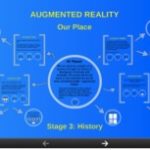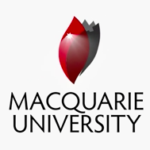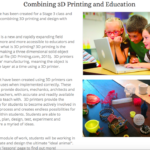Innovative Online Teaching with Technology at Macquarie University
Training Teachers for the Digital Age
In recent times, headlines have focused on the acute teacher shortage worldwide: Nigeria needs an additional 380,000 teachers, Indonesia 190,000, and by 2030, China will need 3.5M and India 3M. One recent article states: India shows a shortage of 1.4M trained teachers.
As technology has become more pervasive, it needs to be included in teacher training. There are several outstanding institutions particularly in the Asia Pacific region. One such leader is preparing teachers for the digital age.
Located in Sydney Australia, Macquarie University’s teacher-training program utilizes the latest technologies that can enhance pedagogy.
Based on proven learning outcomes, they chose to integrate these pedagogical approaches to advance their comprehensive training in the latest digital tools.
One of the program modules they’ve designed covers technologies such as augmented reality to help children achieve science and history outcomes, Minecraft (gamification) to help children achieve mathematics and human society and its environment outcomes, 3D printing so students could design environmentally sustainable houses or even animals that were adapted to their environment. And their latest technology integration, wearables.
It is good to see a university embrace the latest technologies for their pre-service teacher-training program. Macquarie University School of Education shines as a beacon to prepare teachers for the digital age.
While only 50 years young, Macquarie University is one of Australia’s leading universities. Extensive partnerships with some of the best universities and global companies across the US, UK, Europe, and Asia produces world-class teaching and learning innovations.
Recognized for high-quality research their ICT Innovation Centre (MacICT) collaborates with the NSW Department of Education to provide professional learning services for K-12 teachers and students. With a focus on existing and emerging technologies, innovation, pedagogy, and research, several live and online courses are offered for pre-service teachers.
EDUC362: Digital Creativity and Learning Pre-Service Teacher focuses on several emerging technology modules including using augmented reality, gamification, and 3D printing. Matt Bower, Associate Professor shares examples from his students including using augmented reality to help children achieve science and history outcomes and using Minecraft to help them achieve mathematics and Human Society and Its Environment (HSIE) outcomes.
One section of the course shows teachers how they can use 3D printing for students to learn how to design environmentally sustainable houses or how to model animals that have adapted to their environment.
Augmented Reality for Teaching and Learning
Macquarie helped developed a science module with a series of lesson plans around the solar system called ARScience4Kids. Each lesson was aligned to the NSW Australian curriculum.
To develop this augmented reality focuses series, Macqu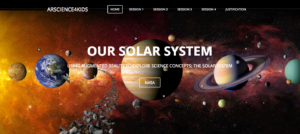 arie worked with NASA and Eon Reality and used tools such as Aurasma, a free AR app that makes designing lessons easy. The AR project science module was designed for students in Year 5. They worked with a group of students ages 9-11 and focused on creativity, collaborative learning and peer assisted learning. The module is available online and being utilized by teachers around the world.
arie worked with NASA and Eon Reality and used tools such as Aurasma, a free AR app that makes designing lessons easy. The AR project science module was designed for students in Year 5. They worked with a group of students ages 9-11 and focused on creativity, collaborative learning and peer assisted learning. The module is available online and being utilized by teachers around the world.
Among the outcomes, students involved in the project felt strongly that augmented reality provides challenging and authentic design based learning tasks.
Additionally, a Prezi that walks people through the augmented reality module of the EDUC362 course is available. It contains a video created by Common Craft on that explains augmented reality in easy to understand terms. To prepare for lessons, one should download Aurasma Studio.
When considering using augmented reality in education for digital creativity and learning, Matt recommends three tools: Aurasma, Layar and Junaio.
Integrating Gamification in Education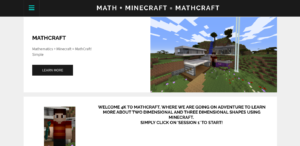
Another module is Mathtonic which was developed using Minecraft, or as they prefer to call it, Mathcraft. The module explores mathematical concepts of 2D and 3D spaces with the inclusion of area and perimeter.
It provides experiential learning and gives students the chance to view problems in different perspectives, share ideas and develop solutions with one another.
Teaching with 3D Printing Technology
Modules for teaching with 3D printing were developed by Ashleigh Barker, a student in the course.
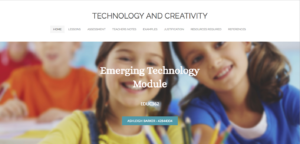 MissBarkersClassroom is a website Miss Barker created during her EDUC362 class. It has lessons, assessments, teacher’s notes, examples and resources required. Another student, Imogene Allen created a Prezi was developed for this module as well. She focused on designing a sustainable home in Japan using SketchUp and 3D printing.
MissBarkersClassroom is a website Miss Barker created during her EDUC362 class. It has lessons, assessments, teacher’s notes, examples and resources required. Another student, Imogene Allen created a Prezi was developed for this module as well. She focused on designing a sustainable home in Japan using SketchUp and 3D printing.
Matt recommends Shapeshifter, which enables quick creation and manipulation of 3D objects that can be downloaded for printing and shared by hyperlink and Tinkercad with browser-based CAD design which supports import from open 3D repositories like Thingiverse and has socially formed gallery of creations.
EDUC362 is just one example of the great work Macquarie University is doing to lead the way for innovation in online learning. Matt Bower and his team provide extensive research in emerging technologies for teaching and learning and their impact on student outcomes. Whether looking at integrating augmented reality, gamification, 3D printing, virtual worlds or other technologies into courses, one most likely can find the exact information needed by simply looking to Matt Bower’s work and Macquarie University.

